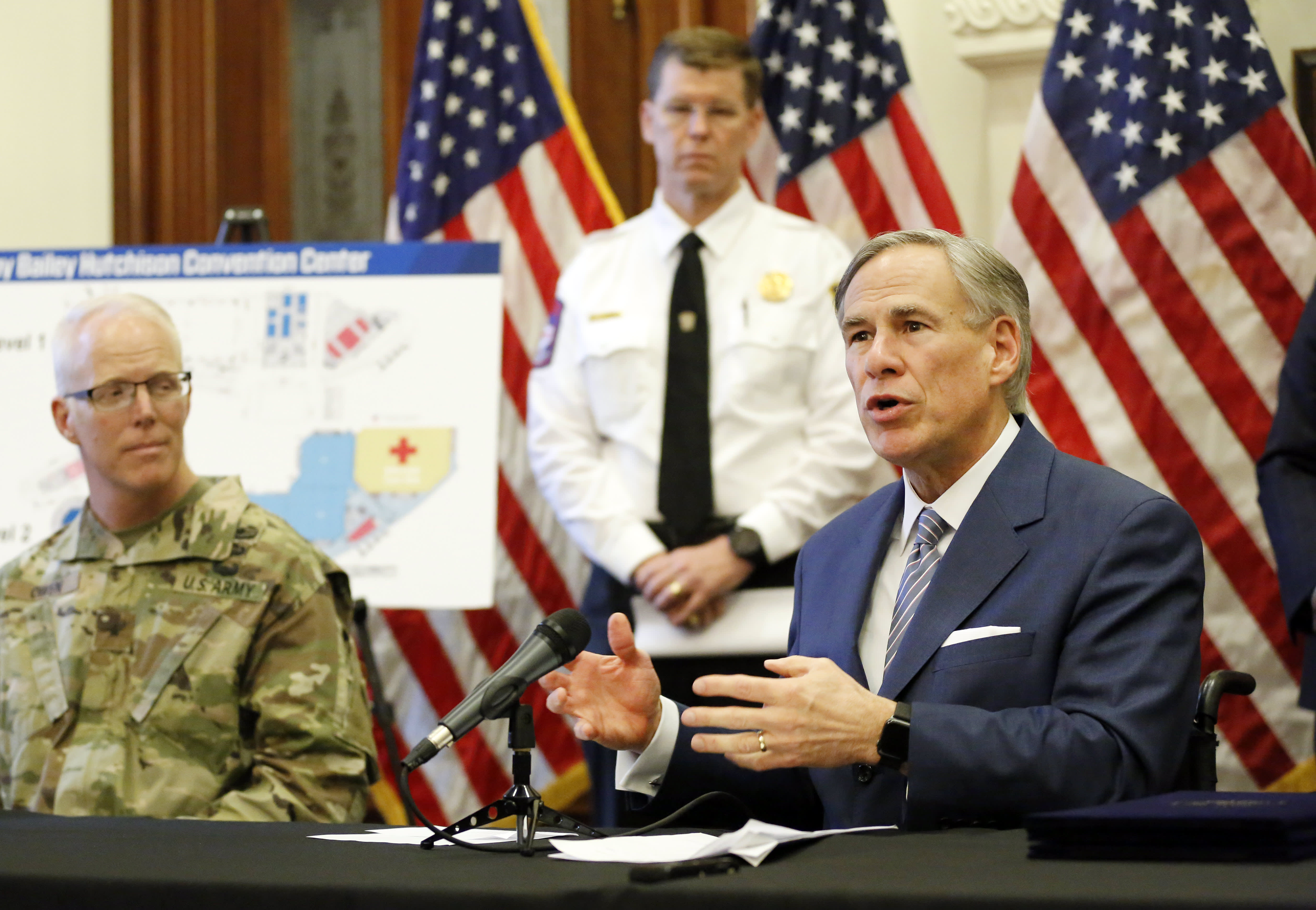
Texas Governor Greg Abbott announces the US Army Corps of Engineers and the state are putting up a 250-bed field hospital at the Kay Bailey Hutchison Convention Center in downtown Dallas during a press conference at the Texas State Capitol March 29, 2020 in Austin, Texas.
Tom Fox | Getty Images
Texas is allowing more businesses, including retail stores, gyms and restaurants, to push forward with reopening plans after a surge in coronavirus cases and hospitalizations over the summer have started to decline.
Abbott said the state has been divided into 22 regions where officials will monitor hospital capacity and coronavirus cases. In 19 of the 22 regions where hospitalizations related to Covid-19 are now less than 15% of all hospitalizations, more businesses that have been allowed to reopen at 50% capacity will be allowed to increase to 75% capacity beginning Monday, Abbott said.
That includes “all retail stores, all restaurants, all office buildings, all manufacturing, all museums and libraries and all gyms,” he said. Effective immediately, hospitals in those regions are allowed to resume elective procedures. Nursing homes and other long-term care facilities will be allowed to reopen for visitations beginning Sept. 24 as long as they don’t have a coronavirus outbreak, he said.
“Since late July, the spread of Covid-19 has steadily and significantly declined. The number of new cases and new hospitalizations have been cut by more than two-thirds. Just yesterday we had the lowest number of hospitalizations in the past three months,” Abbott said.
The three regions not allowed to move forward with their reopenings — the Rio Grande Valley, Laredo and Victoria — are located in the southern part of the state. Bars will remain closed for all regions as officials try to find ways to reopen them while ensuring the coronavirus transmission can be contained, Abbott said.
“Covid does still exist and most Texans remain susceptible,” Abbott said during a press conference. “If we fully reopen Texas without limits, without safe practices, it can lead to an unsustainable increase in Covid that would require the possibility of being forced to ratchet back down.”
This is a developing story. Please check back later for updates.




